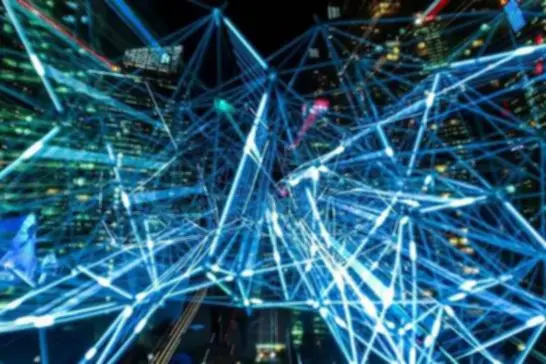Turning to the chapters, Rainer Berkemer and Markus Grottke examine what we are ready to conclude about AI’s capabilities from its achievements, utilizing AlphaZero as a case examine. They emphasise that we do not actually perceive why or how AI methods learn and make choices, which raises questions on responsibility and liability. “What occurs when an artificial intelligence is trained – in an industrial context – to maximise revenue but to not maximise the adequacy of the products with respect to the customer’s safety, needs or health? “Anyone familiar with today’s business world can be conscious that such issues may happen” (36).
Six Questions We Need To Ask About Utilizing Synthetic Intelligence In Health Care

Those are some of the techniques that individuals are attempting to use so as to clarify how these techniques work. For example, whenever you apply the neural community, you’re exploring one specific characteristic, and then you definitely layer on one other characteristic; so, you possibly can see how the outcomes are changing based on this sort of layering, when you like, of various characteristic models. You can see, when the outcomes shift, which model feature set appeared to have made the biggest difference.
This means considering ethics and following moral ideas to information the event and use of AI, starting from regulatory frameworks to encouraging a culture of ethics and values round AI. But the variations between neural networks and the real-world brains they had been modeled on go well beyond the useful variations we’ve talked about thus far. They prolong to important variations in how these functional units are organized. Those who argue that it’s imminent are either obscure about what they anticipate the first AGI techniques to be able to or just define it as the flexibility to dramatically exceed human efficiency at a limited number of tasks.
- In older versions of this, folks have been identifying cats and canine.
- A chatbot may ahead words of condolence, nevertheless it does not feel anything and due to this fact its sympathy is empty.
- Nurses soothe sufferers with a touch; dad and mom feel a child’s unstated worry.
The current look of broadly available Synthetic Intelligence (AI) functions corresponding to ChatGPT and Bard has fuelled a flurry of in style and tutorial discussions concerning the implications of such AI tools for all aspects of up to date life and tradition. After analyzing some features of current developments, this article goes on to evaluation some salient critiques of the emerging AI debate with the intention of analyzing a variety of the limitations of artificial intelligence key themes in the current discourse. The key goal will be to deflate some of the extra overblown and alarming perspectives informed by anthropomorphising AI developments.
It must be ensured that the info is protected in opposition to unauthorised entry at all times and that compliance requirements are met. In addition, the ethical necessities of the EU AI Act have to be taken into consideration. Another space where ethics will be essential is as the know-how strikes in course of synthetic basic intelligence – the place AI will match or even surpass human cognitive skills. Some believe such a development might supercharge human progress, while others worry it could pose an existential threat. The Royal Society is already bringing together specialists to think about what unexpected issues might arise in the method ahead for AI.
On this episode of Thoughts Issues Information, guest host Pat Flynn concludes a dialog with Dr. Winston Ewert about his contribution to the current quantity Minding the Brain. This section explores the implications of the view that human cognition may be reduced to a sophisticated algorithm, as Ewert argues. Ewert contends that an algorithm can solely https://www.globalcloudteam.com/ construct an algorithm less subtle than itself, based on the constraints of the halting drawback in computer science. This poses challenges for views just like the “singularity” speculation that predict exponentially rising artificial intelligence.

In take a look at circumstances, they drive completely, but uncommon incidents, such as overfitting in ml a baby working after a ball, expose boundaries. A 2025 report cited human drivers beating AI in split-second aberrations by 60%. Basic intelligence, somewhat than domain-specific mastery, manages life’s uncertainty, one thing machines don’t possess.

Humans use experience and intuition and give you issues like jazz or quantum concept. This capability for improvisational creation is a threshold AI has bother crossing. The University of Cambridge will use your e-mail address to ship you our weekly analysis information e-mail.
Mathematical Paradox Demonstrates The Limits Of Ai
PwC, a professional-services firm, predicts that synthetic intelligence (AI) will add $16trn to the global financial system by 2030. The total of all activity—from banks and biotech to outlets and construction—in the world’s second-largest financial system was simply $13trn in 2018. Through deep studying, AIs are trained on vast volumes of knowledge in a virtual environment, and basically turn out to be complicated mathematical filters with none understanding of what passes through the filter. This scenario was first explored by the philosopher John Searle in the Eighties in what he known as the Chinese Language Room Argument. A research of the boundaries and prospects of artificial intelligence, presenting current and potential options to those.
They can generate responses that sound appropriate, with out truly grasping the meaning behind them. And with out an express construction for logic and reasoning, AI remains prone to hallucinations, and unreliable decision-making. The analyses in monetary threat management are primarily based on highly delicate information.
The enter generated by the visible system then must be processed, from particular person character recognition as much as the identification of words and sentences, processes that contain techniques in areas of the brain concerned in both visible processing and language. Again, that is an iterative process, where constructing which means from a sentence may require many eye actions to scan back and forth across a sentence, improving reading comprehension—and requiring many of these techniques to speak amongst themselves. To give a way of what this appears like, let’s take into consideration what is going on on as you learn this text. Doing so requires systems that handle motor management, which maintain your head and eyes centered on the display.



